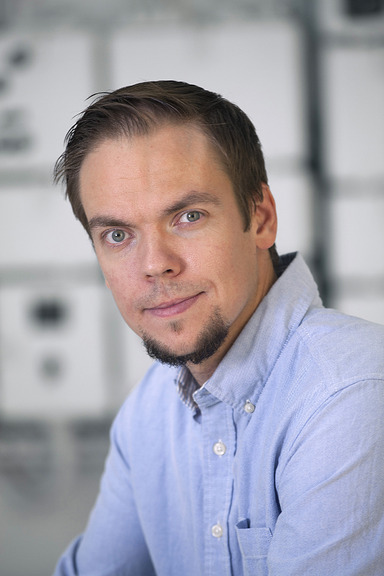A new programme models airflows much faster than before – without a supercomputer
Aalto University Assistant Professor Ville Vuorinen and his colleagues have been developing a programme for more than a year which could be used for modelling flows of indoor air more easily and more quickly. The project was granted special funding from the Academy of Finland earmarked for COVID-19 research.
Open code software comprising about 1 000 lines of code is now nearing completion. The programme has been implemented to enable the most challenging types of modelling in three days.
“For typical flow simulation software, even a supercomputer could easily use ten times as much time on the same task”, says Vuorinen, who has been working on modelling using a supercomputer during the coronavirus epidemic.
“Using our software only requires a desktop computer and an efficient graphics card – the kind that is familiar from the world of gaming which draws graphics on the display, and which costs about 2 000 euros.”
Known – but not recognised
When a person breathes, sings, and speaks, carbon dioxide and aerosols are released into the air from the airways. The small particles can carry coronaviruses and other pathogens. Air change reduces carbon dioxide content as well as the number of aerosols in the air.
The new programme can be used for modelling the effects of air change systems, ventilation, people, walls, and furniture on indoor air flows and the carbon dioxide content of spaces. The lighter the shade of the airflow shown in the model, the lower the carbon dioxide content, and the fresher the air becomes – with fewer pathogen-carrying aerosol particles.
“The models are good at showing how easily black shadow areas with stuffy air can appear in a room. On one side of a screen the air can be fresh, and on the other side carbon dioxide content can be very high”, Vuorinen says.
“This has certainly been known before, but it has not been adequately recognised.”
The programme was implemented using MATLAB, and it is expected to be released in early December. Vuorinen expects that the software will initially be used primarily by researchers. Later the aim is to develop the software so that it can also be utilised by experts in the design of indoor spaces, for example.
Also taking part in the multidisciplinary study is a research group headed by Aalto University Professor Mikko Alava.


New research shows how gatherings of people increase the risk of coronavirus exposure
The content of aerosols carrying the virus rises rapidly in a small space, as light aerosol droplets can remain afloat for hours if the space is poorly ventilated.
Read more news

Research Council of Finland establishes a Center of Excellence in Quantum Materials
The Centre, called QMAT, creates new materials to power the quantum technology of coming decades.
Major funding powers development of next-generation machine technology aimed at productivity leap in export sectors
The BEST research project is developing new types of sealing, bearing, and damping technology.
The TAIMI project builds an equal working life – a six-year consortium project seeks solutions to recruitment and skill challenges
Artificial intelligence (AI) is changing skill requirements, the population is aging, and the labor shortage is deepening. Meanwhile, the potential of international experts often remains unused in Finland. These challenges in working life are addressed by the six-year TAIMI project funded by the Strategic Research Council, and implemented by a broad consortium.






